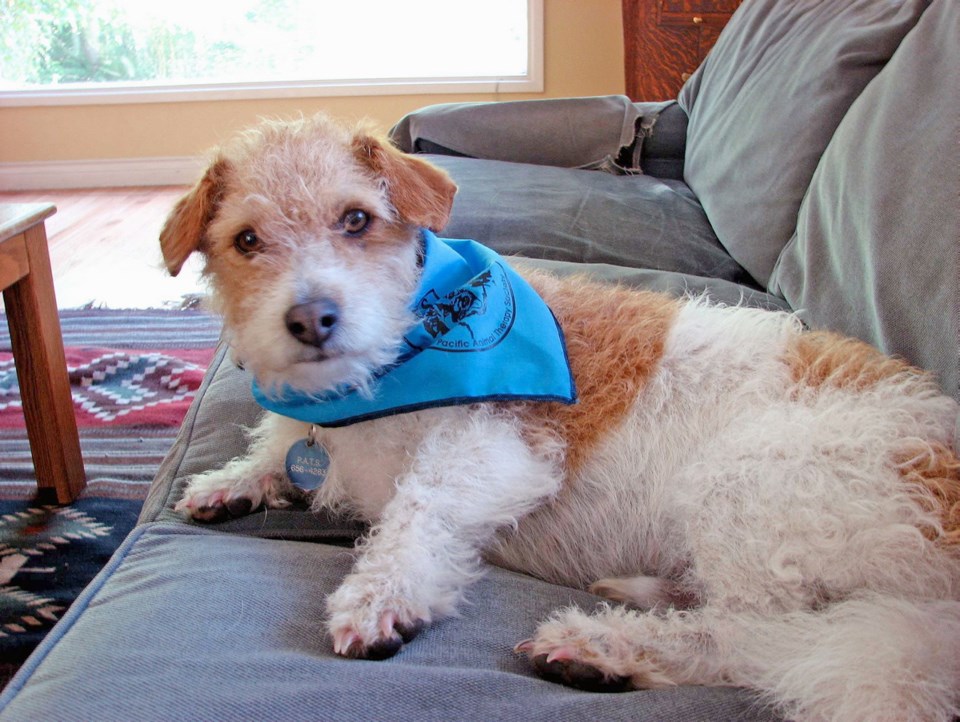A commentary by a retired University of Victoria linguistics professor specializing in endangered language documentation, and precision machinist. His application is being processed to work as a Canadian Coast Guard lighthouse keeper.
On a Tuesday in October, I was leaving the B.C. Cancer Agency building in Victoria with my little therapy dog, Quinn, when a woman approached us. She said that she was about to begin her first cancer treatment and was worried and scared. She asked if Quinn could please return to the building with her and stay until she was called for her appointment.
It was the end of our volunteer shift, but we went back in and Quinn positioned himself close to her in a waiting room. As she stroked his head, while he looked at her, she started to relax.
I have watched this patient-therapy dog interaction play out in the same way hundreds of times over the course of the five years that Quinn and I have been volunteering at the cancer agency. He knew just what to do, instinctively. But, for me, this time was different, because I knew Quinn had cancer too, and, as it turned out, he had only one more week to live.
In September, he had been diagnosed with an inoperable brain tumour and had been taking medications to control the neurological symptoms. On this day, he still felt fine and was his regular self at work. But the cancer was lurking. There are a dozen therapy dogs working weekly shifts at the cancer agency, with only one dog-and-handler team present in the facility at a time.
The building has waiting rooms on three floors and that is where the dogs interact with patients and family members or friends that have accompanied them.
Because of the one-dog-at-a-time system, I have never watched the other therapy dogs work, and only know what Quinn does, but I believe the effect these therapy dogs create is magical. When Quinn, a Jack Russell and Bichon Frise cross of about nine kilograms, entered a waiting area, everyone’s focus shifted as they waited for him to come over to them. He seemed to know where to go first, and how long to stay before moving on to the next person. Quinn had a way of working a room and making it light up.
Then people started talking about their own pets, either current ones or those that were a part of their past. It was rare to find someone who did not have a dog or a cat in their lives that they wanted to talk about. It was often the case that everyone in a waiting area then started to interact and share their stories. Quinn’s presence encouraged patients to think about the parts of their lives that were most important to them. This meant everything else, including their current problems, could be pushed aside, at least for a while.
But life moves on. Quinn was put to sleep on the following Tuesday after his cancer stopped being controlled by medications and started to overwhelm him. His family had been up all night trying to comfort him and early in the morning decided to put an end to his suffering. The Hillside Veterinary Hospital did a wonderful job managing his last day and his cremation was done in a small, very private facility adjacent to one of the beautiful marine parks in our area.
Everyone who knew Quinn will remember him as Quinn, the little therapy dog who touched so many people in his short life and helped to make the world a better place.



